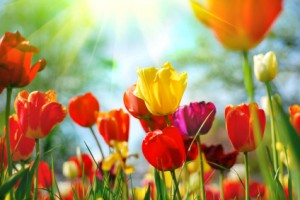 An interfaith minister, ordained through the Universal Life Church, might be interested to learn of the different holidays celebrated throughout spring by different religions. It is a joyous time of year where each faith adds its own unique celebratory ritual. Those interested in being an interfaith minister can get ordained for free online. They also have classes where you can learn about each faith. Below is a snap shot of the various religions and throughout the world and the holidays they celebrate each spring.
An interfaith minister, ordained through the Universal Life Church, might be interested to learn of the different holidays celebrated throughout spring by different religions. It is a joyous time of year where each faith adds its own unique celebratory ritual. Those interested in being an interfaith minister can get ordained for free online. They also have classes where you can learn about each faith. Below is a snap shot of the various religions and throughout the world and the holidays they celebrate each spring.
As the cycles and seasons change, each religion pulls from within its own beliefs different ways to show respect to their God(s). Some fast and some feast, but each comes with a sense of community and commitment to their higher power. Ministers of all faiths have traditions during the spring season. Many of them celebrate the renewal and fertility that so many associate with this time of year.
Ostara is a Neopagan festival. It is celebrated in the Northern Hemisphere during the spring equinox from March 19 to March 22. For some Pagans, common rituals include acting out the courtship between Spring God and Goddess with a symbolic planting of seeds. Similar to Easter, a Christian holiday, there are egg hunts and egg races.
Easter Sunday celebrates the resurrection of Jesus Christ. While families and churches show their respects through hymns, music, flowers and feasts, most Christian families also paint and hide eggs for children to find. This tradition is of Pagan origin, with the Easter bunny being a symbol of fertility.
Holi, a Hindu holiday held in spring, celebrates the color and renewal of life often associated with springtime. During the Holi festivals, caste, gender and age distinctions are ignored. Celebrations include dancing, singing and paint throwing.
Naw Ruz is the New Year for followers of the Baha’i faith. It is a March festival where the community focuses on family gatherings, parties and presents. It commemorates on March 21, the end of the Baha’i fasting season.
At spring equinox, Zoroastrian Iranians celebrate their New Year, Norouz, as reflected by the Persian Calendar. Each celebration is unique and may involve celebratory fireworks and a feast. Norouz is an official holiday with a 13-day celebration. Most schools and national functions are suspended at this time.
Yom Ha’Atzmaut usually takes place mid-April. It marks the Israeli Independence Day of 1948. Official observation of Yom Ha’Atzmaut takes place in Jerusalem, the Israeli capital. Similar to New Year’s Eve, Yom Ha’Atzmaut begins the evening before, with street celebrations and a fireworks display.
Whatever your faith, there is a place and a celebration for you this spring. To learn more, get ordained as an interfaith minister through the Universal Life Church.

